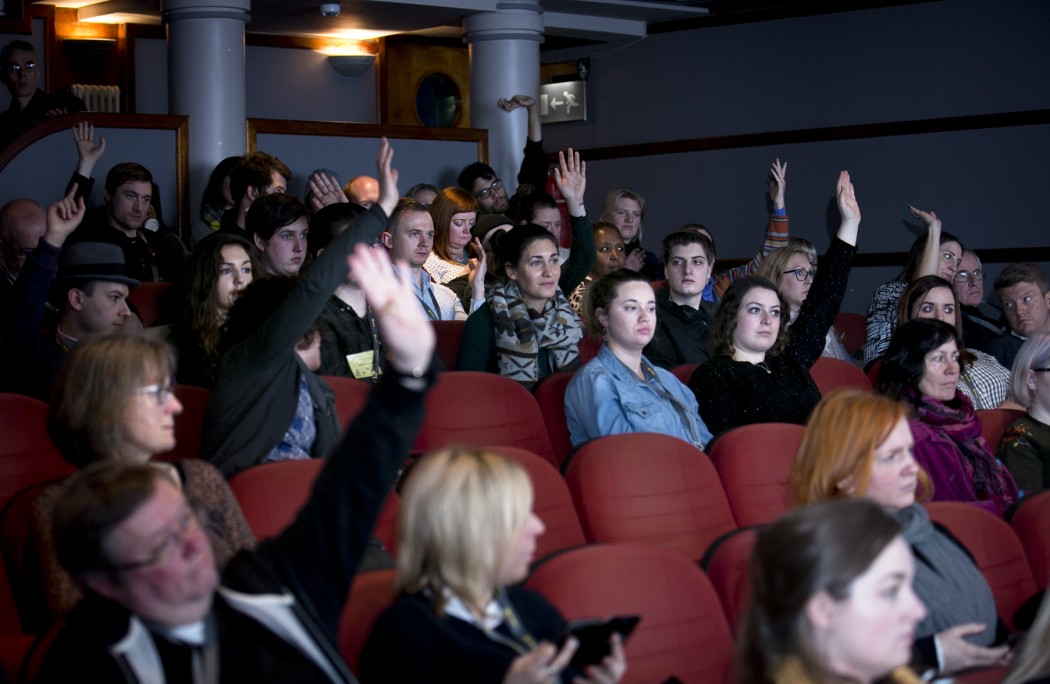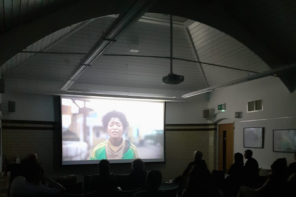For people who live in rural parts of the UK, there are great efforts to expand film culture. What was discussed on the panel was that, primarily, the community should be put at the centre of the activity, rather than the film, as the social value of an event is just as important as the film itself. Such social events as ‘the lunch box’, which merged film and food together, and Pedal Power, which involved people cycling to power the projector to screen the film, was a creative way to use the arts to improve on the communal experience. Such organizations as Carn to Cove, represented by Claire Marshall, Creative Arts East, represented by Alice Morelli and Regional Screen Scotland, represented by Robert Livingston, are organizations that consider future pathways for non-metropolitan cinema and focus largely on the community aspect.
However, despite the efforts of these organizations there are still constraints put on the growth of clubs and cinemas when it comes to funding and the challenges around demand and engagement. This means that they rely, mainly, on people in the community who want to start the projects to get them off the ground.
A couple of years ago I helped to run a weekly Cinema Club which showed mainstream and alternative films to the people in my village every Saturday night. A lovely bonus was that it was free, as the nearest cinema was a conglomerate chain that would charge £12 a ticket. Though you might think this would still be running today, unfortunately, creating a cinema club in a rural village comes with a catch: all the screenings where we operated were in the local church. In the panel, they discussed how restrictions of venues such as town halls and churches can almost be a put off for many people, as they are not designed like a cinema. For many, they are not places of comfort, and this can have a negative effect. For some people in Scotland, for example, who “have to travel four hours on a ferry just to get to their nearest cinema”, a local village hall is their best bet, but how will cinema like this carry on with limited funding and support?
Both panels continued to bring up the question: How do cities, rural places and culture co-exist, while also growing and expanding? David Archibald, from the University of Glasgow/Radical Film Network, explained how Glasgow has built up a radical film network of cultural workers. The city of Glasgow is a great setting in which to have a radical film network who want to make changes, as it has a great tradition as ‘the city of defiance’ owing to its radical and political culture. With film festivals including, Scottish film festivals (EIFF, Glasgow and GSFF) and the Scottish Mental Health Festival, the city is rich in film culture and people are constantly doing and creating things. Bringing all these creative and open-minded people together in a city environment, creates something even greater.
Cian Smyth from Hull, UK City of Culture 2017, screened a short titled, Art Will Bring Us Together, an awe-inspiring piece which explores the definition of ART.
Fundamentally we are all artists.
It’s increasingly important, whether you are in the industry or a film lover, that you embrace the message of the art-form: rather than seeing each other as competitors we must try to build new things together.
The panelists spoke about how the city and environment can define the potential for film and creativity; London can be seen as an unmanageable city, whereas Glasgow can be seen as manageable. They addressed how London has almost become too large and too busy for a fully successful creative film network, while everyone assumes you’re based in London, even when that’s not the case. Parts of cities can be greatly culturally divided, but the idea of allowing citizens to be creative and have access to the best work out there, gives people an opportunity to own their own city and environment.
The effect on culture, when cities don’t have diversity with different cultures, was well expressed in Shola Amoo’s cultural postcards. The process of the affluent coming into societies and driving the less fortunate out of the community is a form of negative progression for creative culture and film. The panel, therefore, asked us to question whether we need to stop and turn away from this sort of development.
The conclusion, from both panels, was that, primarily, all communities should have access to art in all its forms. They emphasized how the arts are important for both rural communities and urban environments. I personally agree strongly with the points and themes discussed in these panels; art is about developing a space into a better space, having room for everyone’s views and about building things together.
Written by Katie O’Hara, from the BFI 2016 Audience Academy, for The Bigger Picture.
Photography courtesy of Eoin Carey.





